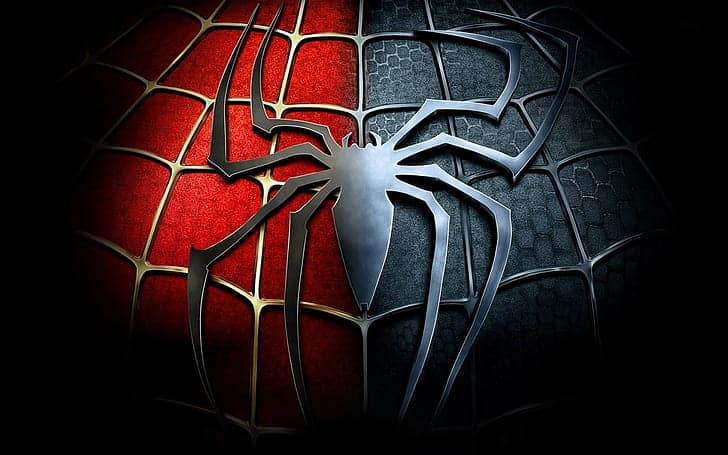Spiderman is arguably the most celebrated and commercially successful comic-book character and superhero of all time, owned by Marvel Comics. As the character entered archetypal superhero narratives, many fans began to identify with Spiderman’s story. The iconic Spider-Man logo plays an important role in the brand’s evolution. The character’s original image was created by Stanley Martin Lieber, a scriptwriter and editor for the well-known American publishing company Marvel Comics. His concept was realized by artist Stephen J. (Steve) Ditko, who also designed the Spiderman logo and costume. Let’s look at the fascinating Spiderman logo’s backstory.
What is Spider-Man?
Spider-Man is the name of one of the world’s most well-known superheroes, created by Marvel Comics in the early 1960s. Thousands of comic books, nine animated series, and dozens of video games are now part of the franchise.
The Spider-Man Logo’s History and Meaning
According to legend, Jack Kirby had an archetype Spiderman logo designed long before the series’ scripting began. Regardless, this prototype vanished, and we’ll never know the similarities between Kirby’s and Steve Ditko’s logos. The logo has evolved significantly over the years in response to changing times and trends. Each new series saw a new logo design, possibly to reflect Spiderman’s evolving character.
Spiderman first appeared in Amazing Fantasy (a comic book anthology) in August 1962. Since then, the character has appeared in various Marvel Comics and other forms of media. Spiderman’s characters and fictional stories were so popular that they were translated and presented in a variety of movies, television shows, and video game adaptations. It is safe to say that Spiderman and his iconic logo are responsible for much of Marvel Studios’ success.
Please keep in mind that the logos for the media company Spiderman and the superhero Spiderman are not the same. While the latter is a fictional character whose costume depicts a spider, the former is represented by comic books, cartoons, feature films, video games, TV shows, and theatrical performances.
1962
In 1962, the first Spiderman logo was created.
The original Spiderman logo, as seen in cartoons and comic books, was quite bulky and cluttered, with a round eight-legged spider drawn by Parker in the plot. Given that logo design technology was not readily available at the time, he did an excellent job! It was a big hit with kids and teenagers who could associate the logo with the character.
Although Peter claims sole responsibility for the logo design, it was created by Steve Ditko. Jack Kirby and Steve were tasked with designing Spiderman’s costume, but only the latter was successful in bringing Stan Lee’s idea to life. While Kirby’s version, like Captain America, was deemed too muscular, Steve Ditko’s design appeared more realistic and was immediately approved.
Although the Spiderman emblem and costume have evolved over time, the original Spiderman costume remains the most iconic. The red and blue colour palette looked great on paper and made the character stand out among New York’s grey concrete walls. This is also why Spidey’s early contenders wear colourful costumes.
1966
In 1966, following Steve Ditko’s The Amazing Spiderman, John Romita Sr. took over as his successor. He described the Silver Age and paved the way for the Bronze Age of comic books as an equally creative artist as Ditko. His creations were instrumental in propelling the series to unprecedented heights.
During his time as Marvel’s Art Director, Romita gave the series some of its most memorable characters, including Hobgoblin, The Kingpin, MJ, and others. He created a new version of the Spiderman emblem as soon as he started working for Marvel Studios, thereby strengthening his role and position at Marvel Studios. The 1966 version of the Spiderman logo, on the other hand, appeared much narrower and inappropriate for the front side of Spiderman’s costume.
The first Spiderman logo featured a soft-shape sans-serif font. The wordmark was curved and featured yellow letters with red undersides.
1979 – 1985
Spider-man lettering was more linear and broader in 1979. The letters were written in white with wide red-orange lines separating them. The title of the comic also had an arch and appeared more symmetric. However, the light gradient was unimpressive, giving it a childish appearance.
The Spider-Man logo underwent another significant change in 1985. For the next five years, a new version with slanted SPIDER-MAN lettering was to be used. The carefully chosen gaps and proportions gave the letters a 3D falling impression. From above, the wordmark appeared solid, heavy, and impressive. The lettering was orange, with broad yellow borders. The most intriguing aspect of this logo is the hanging spider in the foreground, directly over the letter “M.”
1994 – 2005
This revised wordmark was meant for the ‘Spider-Man: The Animated Series’. The font has been flattened and enhanced to appear more mystical and spider-like. In red outlines, the letters were extended, jagged, and smeared.
2005 to Present
The current Spider-Man logo, designed in 2005, appears more professional and advanced than all previous versions. Unlike in the past, the designers paid close attention to letter clarity and symmetry.
One of the most well-known Spiderman logo variations was an illustration of a black suit. Both the colour of the costume and the depiction here represent all of the protagonist’s dark sides. Peter had to deal with his bad-tempered alter-ego in the comic series. Regardless of its meaning, the logo is quite striking.
As a one-of-a-kind monochromic logo with long and defined spider legs, it drew customers in and convinced them to buy. In 2013, a new version of the Spiderman logo debuted. Humberto Ramos created the spider after being inspired by Alex Ross’ draft for the first episode of the series. It had an unusual shape and appeared larger than most other emblems. It appeared to be quite stylish and appealing.
Another intriguing design is a recent combination of the Spiderman and Ironman logos. The dominant colours in this scene are red and gold, with a black spider on the hero’s chest.
Symbiote
Spiderman’s logo remained largely unchanged from the 1970s until 1984 when a new storyline for the superhero was introduced. This plot revolved around the Symbiote and Spiderman’s dark alter ego. The transformation was abrupt and stark. First and foremost, Spiderman’s costume was transformed into an all-black suit.
To contrast with the black costume, the logo was left white. The spider was also made larger on the chest to give it a more looming appearance. Randy Schueller, a fan, came up with the idea for this logo. Marvel liked the concept and bought it before putting their artists to work on it.
The Spider-Man Logo’s Key Design Elements
The Spider-Man logo is visible on the superhero’s chest whenever he rips up his costume to save the universe. The iconic logo design is influential and conveys a sense of responsibility and dignity bestowed upon Spider-Man.
The Spider-man logo is shaped like a spider against a strong web background, and it represents the character’s extraordinary speed, skills, and supernatural powers. The spider represents power, agility, wisdom, mystery, creativity, and protection.
Colour of the Spiderman logo:
In the comic series, the Spiderman logo was a mysterious black shade, and in the first two motion pictures – Spider-Man and Spider-Man 2, it was a brownish-black tone. The traditional red background represents the superhero’s vigilant nature. Similarly, the silverfish grey color of the spider adds to the hero’s elegance.
There were, however, some exceptions to this colour scheme. For example, the 1984 version featured a white spider on a black background, whereas the 1994 version featured a blue background. Both versions included unique costumes.
Spider-Man logo fonts:
The fonts of the Spiderman wordmark are basic and italicized. The depiction of the superhero’s name varies from episode to episode of the series.
The Origins of Spider-Man
We’re all fans of Spider-Man. For nearly sixty years, this Marvel Comics mainstay has remained an easily identifiable regular Joe at heart—albeit one who happens to be endowed with magical superpowers.
Unfortunately, none of the powers is powerful enough to solve many larger problems in real life, and Spider-Man’s secret life as Peter Parker perfectly illustrates how his life has gone wrong.
The Spider-Man story begins with Peter Parker, an orphaned adolescent living in New York with his Uncle Ben and Aunt May. Parker was a shy young man who was extremely intelligent and gifted in science. Other more popular kids, such as long-time rival Flash Thompson, snubbed him repeatedly. But his life was about to change forever after he visited the science museum.
Parker was bitten by a radioactive spider at the museum. Parker gained spider-like abilities and powers, such as reflexes and strength, as a result of the bite. He also developed a “spider sense,” which constantly alerted him to danger.
Parker used his newly acquired powers to seek fame and fortune before deciding to fight crime. He rose to prominence after working with a wrestling circle and made his television debut. A robbery occurred on the TV show, but Parker chose not to intervene.
Read Also: Spirit Airlines Logo: Meaning, Evolution & History
Parker later discovered that the same thief he could have dealt with at the TV studio attempted to rob his uncle and aunt’s home, resulting in the death of his Uncle Ben during the scuffle. Parker was inspired to fight crime rather than pursue fame and fortune by his uncle’s final words. This is when Spider-Man truly became a reality.
Parker’s relationship with Gwen Stacy is one of the most pivotal moments in his life. Parker adored Gwen when he was younger. The blond beauty was the ideal match for him.
Unfortunately, this relationship ended in tragedy when Gwen was killed during Parker’s battle with the Green Goblin (Norman Osborn). Parker did everything he could to save Gwen. This incident has always bothered him and made it difficult for him to reveal his identity to others for fear of his enemies targeting them.
Parker eventually overcame his grief over Gwen’s death and began dating Mary Jane Watson, a model and actress with whom he had attended high school. Their relationship was far from easy, with Parker constantly worried that he’d endanger his new girlfriend. Mary Jane eventually revealed to Parker that she’d known he was Spider-Man for a long time, which helped strengthen their bond.
The omnipotent creature known as “The Beyonder” transports many of Earth’s heroes to another planet in the ‘Secret Wars’ mini-series. Parker acquires a new black outfit with an infinite supply of webbing and the ability to change its shape through thought during his time on the new planet. Parker returns to Earth in his new costume and continues to take on criminals. It soon becomes clear that the costume is an alien symbiont attempting to fully integrate with Parker.
Read Also: Stranger Things Logo: What Does the Logo Mean?
Parker is aided by the Fantastic Four in breaking free from his black outfit and resuming his usual red and blue attire. However, the alien symbiont forms a bond with rival and fellow Journalist Eddie Brock, transforming him into the villain Venom. Eddie and Venom have since had a major falling out and continue to feud.
Parker has since discovered that Native Americans’ totem-like power is linked to his own. Peter died in a brutal fight with a creature named Morlun, only to be resurrected with more powerful spider-like abilities. Also, during Parker’s battle with Morlun, his Aunt May discovered that Parker was Spider-Man, and she is now one of his most ardent supporters.
Tony Stark, also known as Iron Man, has recently taken Parker under his wing. Stark has provided him with a new outfit that enhances his abilities and power while also shielding him from bullets. As part of his initiative to keep superheroes in check, Stark then introduced the Superhuman Registration Act, with Parker serving as the initiative’s ultimate poster boy by revealing his mysterious identity to everyone. This action could have serious ramifications for Spider-Man in the future.
Parker took some time to realize he wasn’t on the right side of history, so he defected and joined Captain America’s rogue group of heroes. Parker went into hiding wearing his black outfit again after the war ended and Iron Man triumphed. The authorities are currently looking for him.
Related Articles
- Black Panther Logo: What Does it Represent? Detailed History
- Top 20 Highest Paid Boxers in The World 2022-2023: See The Networth
- E-commerce Business: Ideas, Models, & 2023 How to Start Guide
- WONDER WOMAN LOGO: History, Transitions & Meaning






